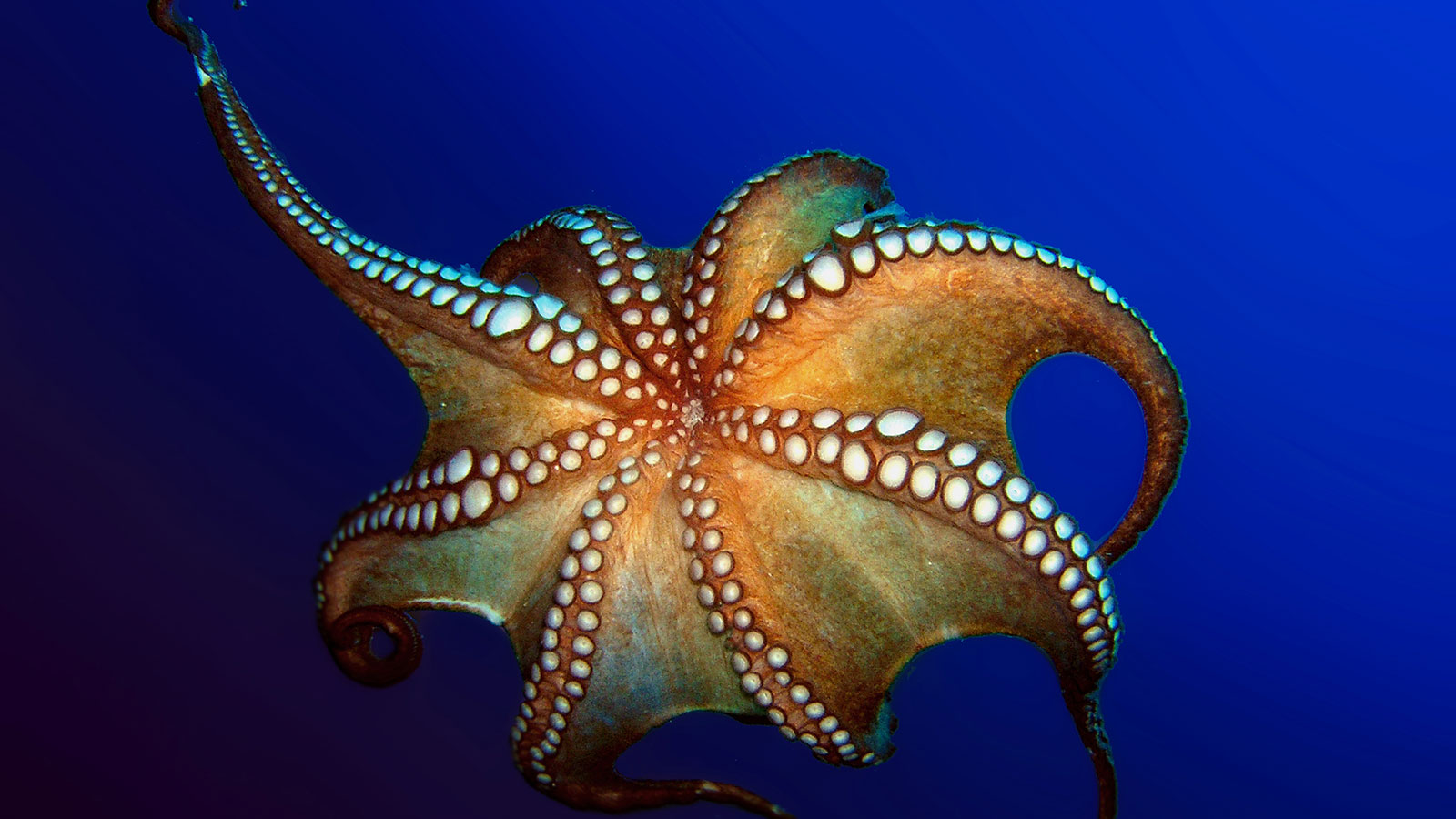Common Octopus : A Marvel of Marine Adaptation
-

- by Admin
- Aug 16, 2024

The common octopus is an amazing animal that may be found in shallow waters in tropical, subtropical, and temperate regions all around the world. Its globe-shaped head is topped by eight long limbs that extend to a length of 60 to 90 cm. Their tentacles are lined with two rows of suckers that are taste-sensitive. Although it was always thought that an octopus's appendages were all arms, more recent research conducted by marine scientists has revealed that two of the limbs really function more like legs, enabling the animal to walk across the seafloor and propel itself forward when swimming. In addition, the octopus may regenerate tentacles in the event that it loses one.
The common octopus is categorized as a mollusk, which is a soft-bodied invertebrate with a shell, just like a squid.Although it lacks a skeleton, it does have a cranium to protect its brain. It also has a tongue with teeth called a radula and a pointed beak.
What Commited Octopuses Consume
The radula of the common octopus is used to drill into and pry open the shells of prey, such as clams and crabs. It may also inject its victim with a venom that paralyzes them when it bursts through the shells.
Common Skills for Octopus Camouflage
The octopus uses a variety of defense mechanisms in the event of a possible attack. In the first technique, the skin's pigment cells shrink, enabling remarkable concealment. To fit in with their environment, they not only change color but also modify the texture of their skin and their posture.
The common octopus is an amazing animal that may be found in shallow waters in tropical, subtropical, and temperate regions all around the world. Its globe-shaped head is topped by eight long limbs that extend to a length of 60 to 90 cm. Their tentacles are lined with two rows of suckers that are taste-sensitive.
Although it was always thought that an octopus's appendages were all arms, more recent research conducted by marine scientists has revealed that two of the limbs really function more like legs, enabling the animal to walk across the seafloor and propel itself forward when swimming. In addition, the octopus may regenerate tentacles in the event that it loses one.
The common octopus is categorized as a mollusk, which is a soft-bodied invertebrate with a shell, just like a squid. Additionally, the octopus may develop reflective markings to frighten off any predators. To give the impression of greater threat, the octopus may darken the areas surrounding its eyes, suckers, arms, and web. Their emotions are also reflected in their coloring. Although octopuses are generally brown in color, they can become white when they are afraid or red when they are angry.
Octopus Pen
Flight is another protection strategy. The octopus propels itself by funneling water from its gills at the top of its mantle through its siphon at the bottom, which it uses to expel a cloud of purple-black ink. It has a top speed of 40 km/h (25 mph), although it is not able to stay at this level for very long. Octopuses are solitary creatures that live underground in tunnels or among rocks and coral. To conceal their dens, they strew rocks and shells all over the place. They only come out of the dens to feed or breed.
Reproduction of Common Octopus
To mate, octopuses travel closer to the coast in the early spring. The female releases 100,000-500,000 eggs two months after mating. She spends her time protecting the eggs from predators, cleaning the eggs, and squirting water to provide oxygen.
Both the male and female octopuses pass away shortly after the eggs hatch. Their lifespan is brief 12–18 months. The hatchlings spend 45–60 days feeding on plankton while being moved by the currents. Out of all the hatchlings, only one or two will make it to adulthood.
Status of Conservation
The IUCN Red List does not currently list common octopuses as vulnerable or endangered. On the other hand, Asian and Mediterranean cuisines frequently feature octopus. Octopuses are captured by trawling and by enticing them into plastic traps known as "octopus pots," which they mistake for suitable dens. Octopus populations may be at jeopardy if overfishing takes place or if trawling takes place during their nesting season. Octopuses are solitary creatures that live underground in tunnels or among rocks and coral. To conceal their dens, they strew rocks and shells all over the place. They only come out of the dens to feed or breed.
Reproduction of Common Octopus
To mate, octopuses travel closer to the coast in the early spring. The female releases 100,000-500,000 eggs two months after mating. She spends her time protecting the eggs from predators, cleaning the eggs, and squirting water to provide oxygen.
Both the male and female octopuses pass away shortly after the eggs hatch. Their lifespan is brief 12–18 months. The hatchlings spend 45–60 days feeding on plankton while being moved by the currents. Out of all the hatchlings, only one or two will make it to adulthood.
0 Comments:
Leave a Reply